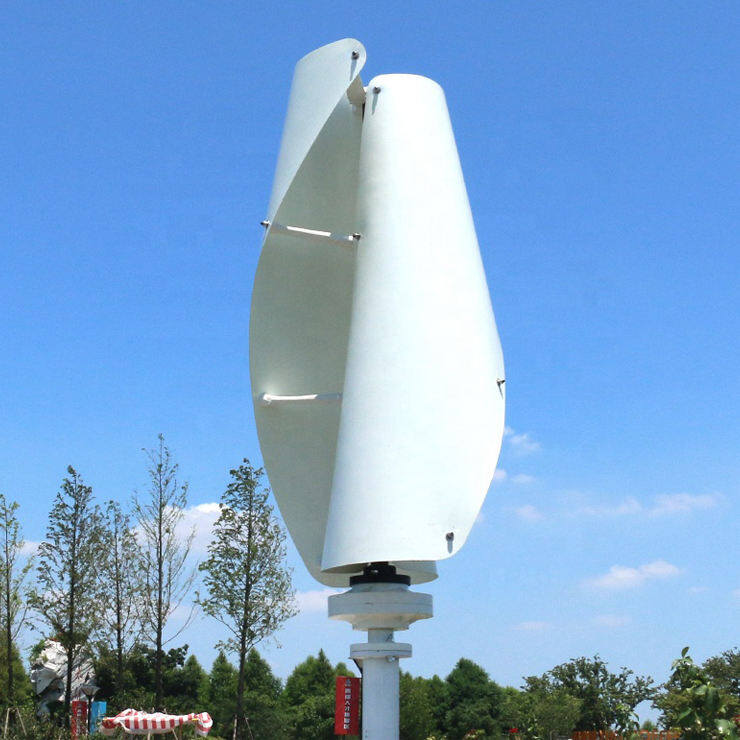Email format error
Email cannot be empty
Email already exists
6-20 characters(letters plus numbers only)
The password is inconsistent
Email format error
Email cannot be empty
Email does not exist
6-20 characters(letters plus numbers only)
The password is inconsistent


The Rise of Small Household Wind Turbines
In a world increasingly aware of the environmental impact of traditional energy sources, the shift toward renewable energy has never been more crucial. Solar power, hydropower, and geothermal energy are familiar players in the renewable energy landscape, but there's one unsung hero that's gaining momentum—small household wind turbines. These compact, efficient devices are quietly revolutionizing how individuals and communities generate power, and they offer a promising path toward a more sustainable future.
The Basics of Small Household Wind Turbines
Small household wind turbines are exactly what they sound like: scaled-down versions of the massive wind turbines you might see on a wind farm. These smaller versions are designed to be installed on residential properties, providing an alternative energy source that can power homes, farms, and even small businesses. Unlike their larger counterparts, which require substantial land and are often located in remote areas, small wind turbines can be set up in backyards, on rooftops, or in open spaces close to home.
These turbines harness the power of the wind to generate electricity. As the wind spins the turbine blades, they rotate a shaft connected to a generator, which then converts the mechanical energy into electrical energy. This clean, renewable energy can either be used immediately, stored in batteries for later use, or even fed back into the grid, potentially earning the homeowner some extra income.
Why Consider Small Household Wind Turbines?
There are several compelling reasons why more people are turning to small household wind turbines as a viable energy solution. First and foremost is the environmental benefit. Wind energy is one of the cleanest sources of power available, producing no greenhouse gas emissions once the turbine is installed. By generating your own electricity through wind power, you can significantly reduce your carbon footprint and contribute to the global fight against climate change.
Another advantage is energy independence. With a small wind turbine on your property, you become less reliant on the traditional power grid. This can be particularly beneficial in rural or remote areas where access to electricity might be unreliable or expensive. Even in urban settings, having a personal wind turbine can serve as a backup power source during outages, ensuring that you and your family are less vulnerable to disruptions in energy supply.
From a financial perspective, small household wind turbines can also make a lot of sense. While the initial cost of purchasing and installing a turbine can be substantial, the long-term savings on your electricity bills can offset this expense. Depending on your location and wind conditions, some households may even achieve complete energy self-sufficiency, eliminating their electricity bills altogether. Moreover, in some regions, governments offer incentives or tax credits for installing renewable energy systems, making the investment even more attractive.
The Challenges of Small Household Wind Turbines
Of course, like any technology, small household wind turbines come with their own set of challenges. One of the primary considerations is wind availability. For a wind turbine to be effective, you need to live in an area with consistent, strong winds. While small turbines can operate in lower wind conditions than their larger counterparts, they still require a minimum wind speed to generate electricity efficiently. This means that not all locations are suitable for wind turbines, and conducting a wind assessment before installation is crucial.
Another potential drawback is the aesthetic impact. Some people might find wind turbines unsightly, particularly in suburban or urban settings where space is limited. Additionally, noise can be a concern, especially if the turbine is located close to living areas. However, advances in technology have led to quieter and more visually appealing designs, reducing these concerns for many homeowners.
Maintenance is another factor to consider. While wind turbines are generally low-maintenance, they do require occasional checks and upkeep to ensure they continue operating efficiently. This can include inspecting the blades for damage, checking the electrical components, and ensuring that the turbine is securely anchored.
Making the Right Choice
If you're considering investing in a small household wind turbine, it's important to weigh these factors carefully. Start by assessing your location to determine if it's suitable for wind energy. There are tools and services available that can help you evaluate the wind potential at your site, taking into account factors like average wind speed, topography, and nearby obstructions.
Next, consider the size and type of turbine that would best meet your needs. Small household wind turbines come in a variety of sizes and designs, from vertical-axis turbines that are more compact and can be mounted on rooftops, to horizontal-axis turbines that require more space but are generally more efficient. You'll also need to decide whether you want a grid-tied system, which connects to the local power grid, or an off-grid system, which relies entirely on your turbine and possibly other renewable sources, like solar panels, for power.
Finally, think about your budget and long-term goals. While small household wind turbines can be a significant upfront investment, the potential for long-term savings, coupled with the environmental benefits, makes them an attractive option for many. Additionally, with the ongoing advancements in wind technology, prices are likely to continue decreasing, making wind power more accessible to a broader range of consumers.
The Future of Small Household Wind Turbines
As technology continues to evolve, the future looks bright for small household wind turbines. Innovations in turbine design are making them more efficient, quieter, and more affordable. At the same time, increasing awareness of climate change and the need for sustainable energy solutions is driving demand for renewable energy sources like wind power.
In conclusion, small household wind turbines represent a powerful tool in the fight against climate change and the quest for energy independence. By harnessing the wind's natural power, homeowners can reduce their reliance on fossil fuels, lower their electricity bills, and contribute to a cleaner, more sustainable world. As more people recognize the benefits and potential of small household wind turbines, we can expect to see these devices become an increasingly common feature in homes and communities around the globe.

